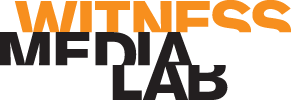Published January, 2020 by Jackie Zammuto in Legal Video Advocacy
Production Workflows: Getting Started with Legal Advocacy Videos
Below is a suggested workflow for advocates, legal teams and filmmakers producing legal advocacy videos to use before, during and after filming:
BEFORE FILMING
- Secure a filmmaker/editor. Keep in mind that it can be challenging to find volunteer filmmakers with availability. See our blogpost for general tips for working with filmmakers. And if you are a filmmaker/editor and would like to volunteer your time for a legal video advocacy project, sign up here.
- Determine roles and expectations for everyone involved – who will be making decisions, communicating with the client or prison officials, who will take the lead on drafting the story structure/interview questions, who will edit the footage, etc.
- Select which elements of your client’s story should be featured and emphasized in the video. Think about your target audience (i.e. DA or judge) and what they are looking for. Remember, you can’t include everything in the video. Determine what content will be best communicated on video versus what elements can be included the written packet. Use this Video Action Plan worksheet to develop your strategy.
- After you identify a structure, think through what types of interviews, interview questions, and/or B-roll footage could help illustrate each element. Example for “Role of client in family/community”:
- Interview participants: Incarcerated client, family members
- Interview questions: What is your relationship like? How have they helped you grow during your incarceration?
- B-roll (supplemental footage) ideas: Family/childhood photos, family home, client interacting with family
Examples of story elements and story structure


DURING FILMING
- Determine roles to make sure the filming process goes smoothly – who will ask questions? Who will take notes?
- Write and record notes while they’re fresh in your mind
- Make sure to debrief with the team after filming
AFTER FILMING
- Transcribe interviews (see this post for transcription service recommendations)
- Create a Google doc for the transcribed interviews
- Do a paper edit or preliminary edit (see video below for one approach to a paper edit.) This process can easily be done using a google or word doc as described here:
- Create color codes for each element (e.g. Role of client in family/community will be blue).
- Highlight all quotes that fit into this category in the correct color
- Copy and paste color coded quotes into a sequence (does not have to be linear – refer back to the story structure you created before filming). This is also a good place to start making cuts and decisions about what is most important
- Try to pick a moving/profound statement as the opening quote so that the audience holds onto that feeling for the rest of the video.
- Share and discuss Google doc or paper edit with your video editor
- Give feedback on drafts – Both Dropbox and the Vimeo Annotation Tool can be useful ways to gather feedback directly on the video from multiple viewers
